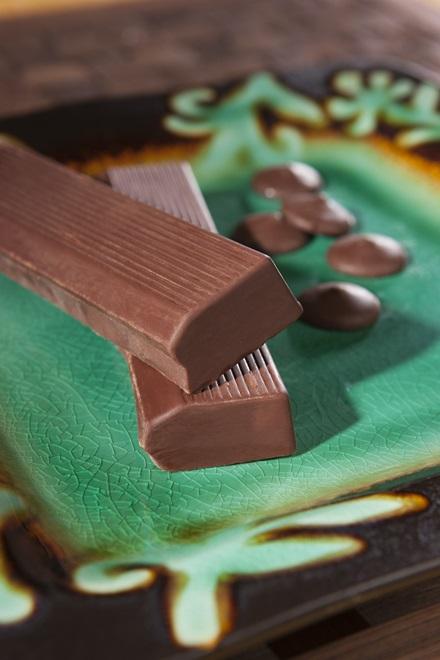A “Sweet” High-Tech Test for Cocoa Powder Replacement

An experimental method of checking for carob flour—sometimes passed off as cocoa powder—could also help detect mycotoxins produced by certain fungi in corn and other grains.
ARS Chemist Chris Maragos is discovering new ways to detect fungal toxins (“mycotoxins”) in food and keep them out of grains like corn so that they’re safe for people and livestock to eat.
Now, an offshoot of his efforts could help fight food fraud, such as when carob flour is passed off as cocoa powder.
Derived from the pods of a Mediterranean tree of the same name, carob flour has legitimate food uses. These include serving as an alternative for cocoa powder in baked goods, candies, beverages and other products. However, substituting carob flour for cocoa powder without disclosing it deprives consumers of the product they paid for and the quality they expected.
According to the U.S. Food and Drug Administration, deliberate acts of food fraud fall under a broader category known as “economically motivated adulteration”—namely, the removal, exclusion, or substitution of a valued ingredient for a less expensive and/or inferior one. This deception costs $10-$15 billion annually in business, brand reputation, and other economic losses. More significantly, food fraud can lead to consumer health issues, for example, by triggering allergic reactions.
Carob flour can be a popular choice for cocoa food fraud because of its similar dark brown color and smooth, powdery texture. Unlike cocoa powder, however, carob flour is naturally sweet and has a somewhat different, nutty flavor.
Maragos used his experience with detecting fungal toxins to develop a chemical “fingerprint” for carob powder that can distinguish it from cocoa powder in mixtures of the two. Specifically, his fingerprinting method uses mass-spectrometry to attain the unique molecular weights of both carob flour and cocoa powder. Part of the process involves blasting samples of the two with hot helium gas. This forces the release of charged particles called ions so their molecular weights can be analyzed.
Others have tried different analytical procedures, such as visible near-infrared spectroscopy, but with drawbacks of one kind or another. Maragos’ fingerprinting method takes about 15 minutes to accurately differentiate carob flour from cocoa powder with 95-100% accuracy.
“It’s fairly easy to use and also works with solids,” said Maragos, who works at ARS’ National Center for Agricultural Utilization Research in Peoria, IL.
He published details about the methods in the journal of Food Additives and Contaminants and is making the information available to the confectionary industry, especially cocoa importers.
Maragos’ sights are now firmly set on exploring the fingerprinting method’s potential to improve the detection of mycotoxins in corn, barley, and certain other grains.
“This project was a test-case to learn how this technology could be made relevant to agricultural producers—starting with carob flour as a manmade adulteration in cocoa and progressing toward detecting the natural adulteration of grain with mycotoxins,” Maragos said. – By Jan Suszkiw, Office of Communications.

